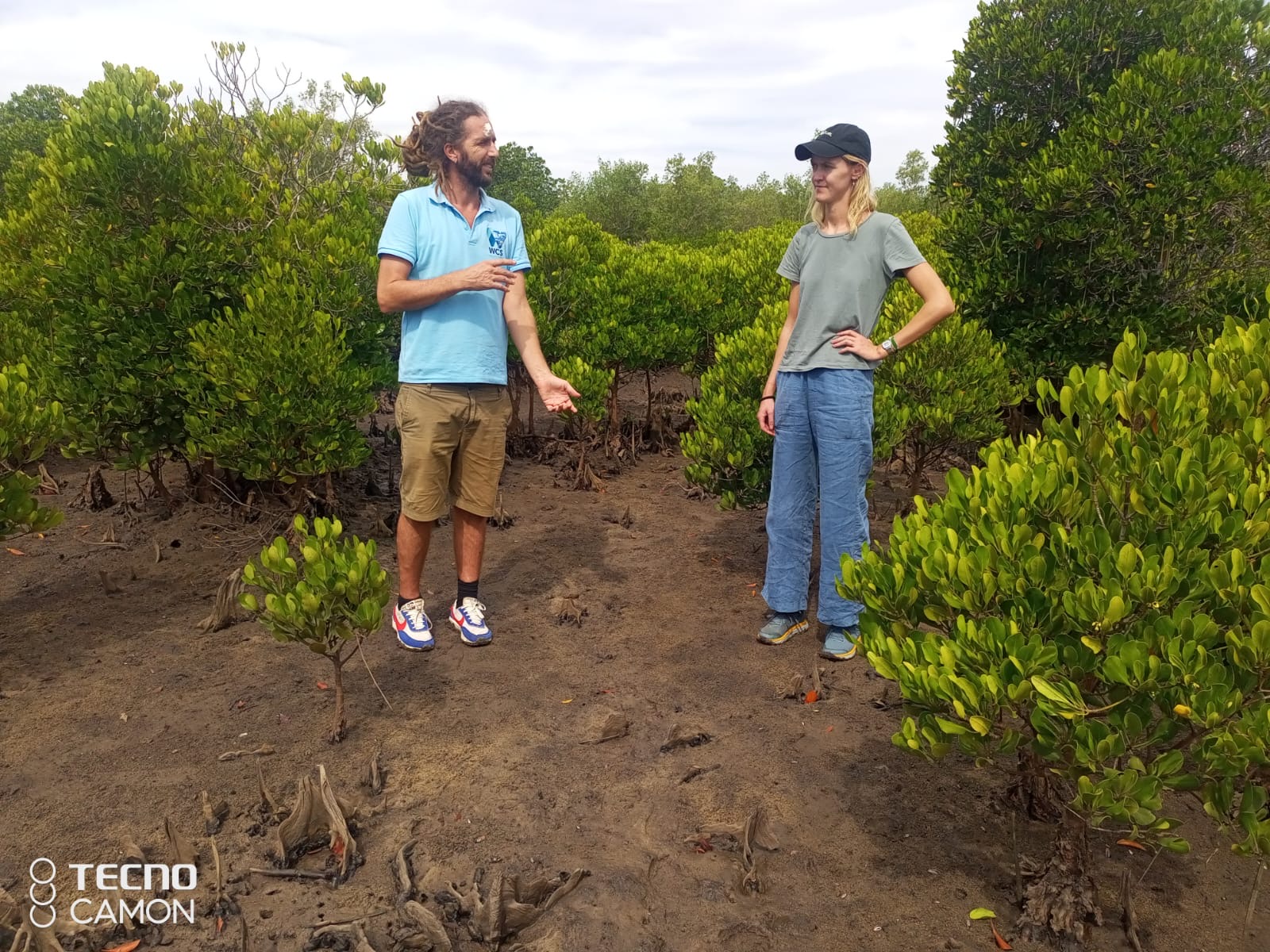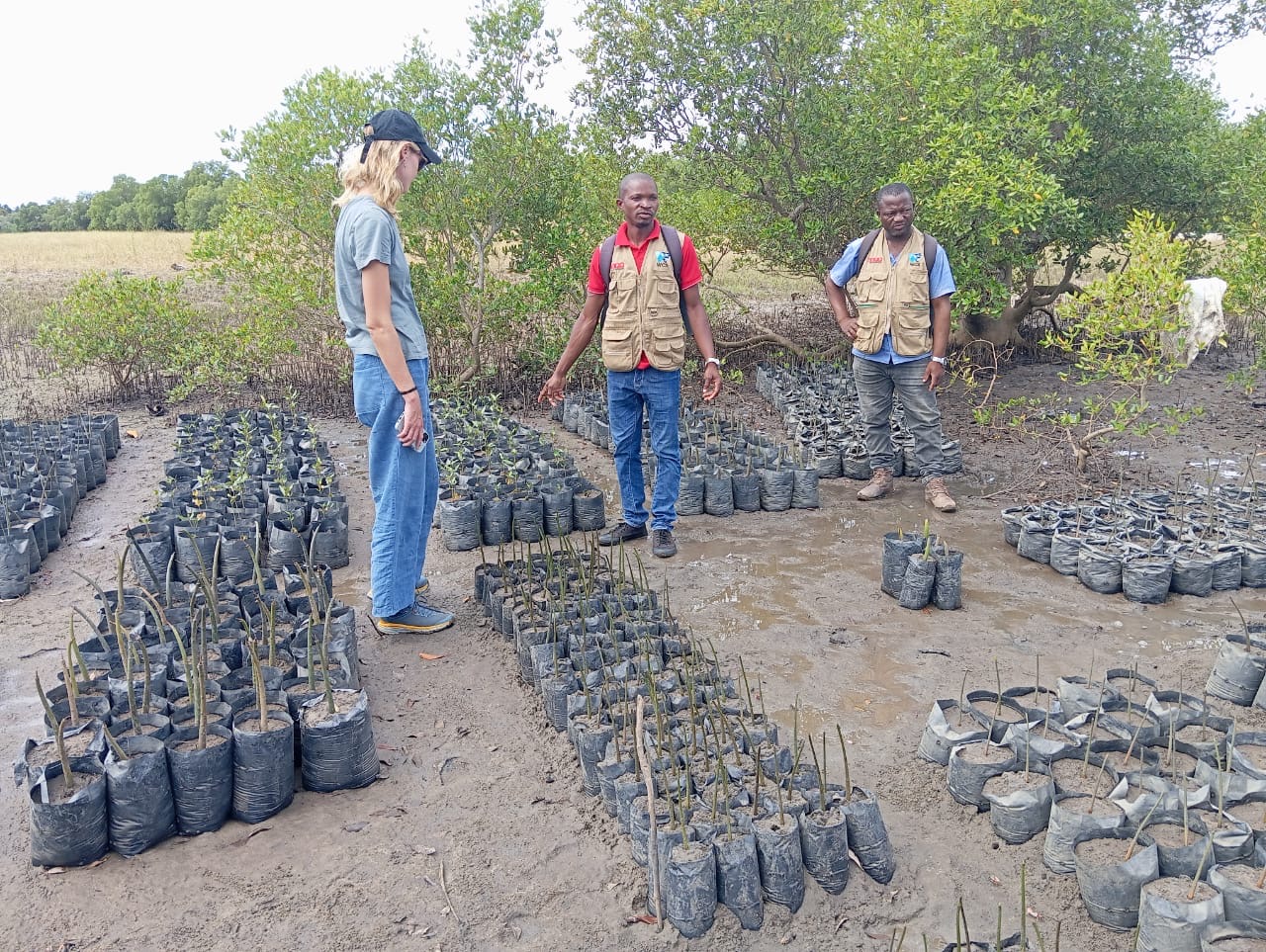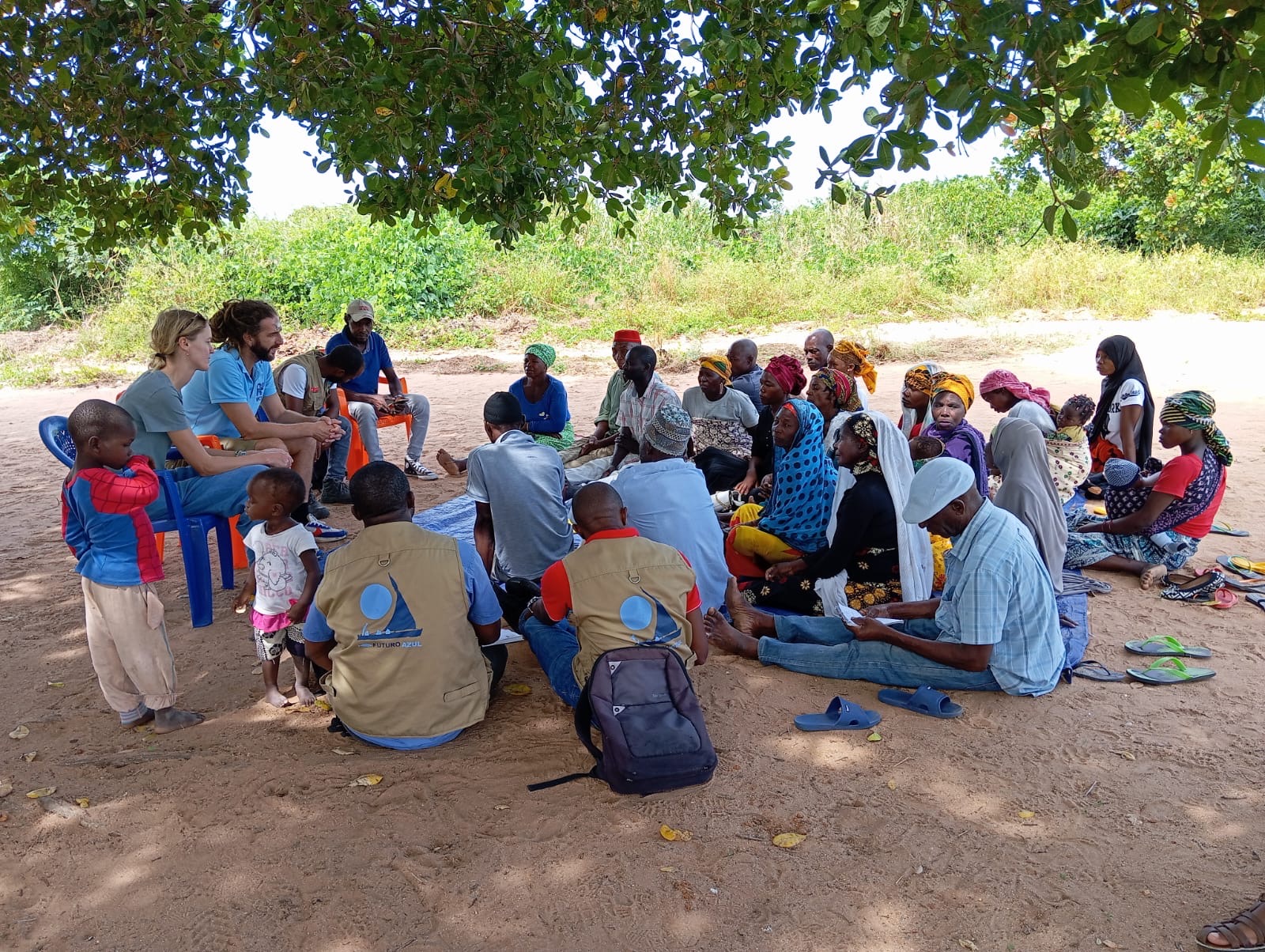Life Below Water is currently the most underfunded SDG with a finance gap of $150 billion per annum. Former Forest Carbon team member, Madeleine, speaks about her work in blue carbon finance in Tanzania and Mozambique.
Madeleine has spent the past 18 months working on blue carbon finance with the Wildlife Conservation Society. She has been exploring the feasibility of mangrove and seagrass conservation and restoration to provide finance to support community marine conservation through carbon markets. This work was focused on the Western Indian Ocean region with pilot projects in Tanzania and Mozambique. Before this, Madeleine worked as a UK Peatland Code project developer at Forest Carbon. Madeleine has an MSc in ‘Climate Change: Managing the Marine Environment’ from Heriot-Watt University, Edinburgh.

Madeleine, please tell us more about what you’ve been up to since leaving Forest Carbon.
I joined the Wildlife Conservation Society’s (WCS) office in Mombasa, Kenya to take on the role of Blue Carbon Coordinator for the Western Indian Ocean region. The role primarily focused on evaluating the potential of blue carbon finance to support WCS marine programs in Kenya, Tanzania, Mozambique, and Madagascar, contributing to the global objective of protecting 30% of land and oceans by 2030.
The high costs of establishing, managing and enforcing marine parks across the region mean that there is a considerable funding gap. Carbon finance presented an opportunity to bring additional, incentive-based financing to communities that can be rewarded for improved ecosystem management.
WCS has a small outpost in Mombasa which is made up of coral reef scientists, started by Dr. Tim McClanahan. The office is beautifully positioned in an apartment block overlooking Pirates Beach which leads out to Mombasa Marine Park. Watching the flow of tides and weather systems move across the tidal lagoon, with monkeys stealing bananas off your desk, was an exciting new working environment, despite the challenge of intense humid heat and circling mosquitos.
Severe global coral bleaching took place this year, with around 73% of Western Indian Ocean corals experiencing mid to severe bleaching impacts (1). It was desperately sad to see the reefs I had been diving and snorkelling around for the past year experience this kind of devastation. It’s difficult to see environmental degradation happening at this speed and scale. In terms of my work on blue carbon projects, I was focused on areas of degraded mangrove ecosystems in Tanzania and Mozambique.

What have been your main challenges in the blue carbon space?
Blue carbon has been an emerging carbon project type for a while now, with the first project being certified in 2010. Despite the 14 years that have passed, there has not been much growth in the blue carbon pipeline since; blue carbon projects only make up 0.2% of the Voluntary Carbon Market today (2). I unearthed many challenges over my 18 months of research and found that projects require a very specific set of diverse conditions to make them feasible. Broadly these challenges can be sorted into the following groups:
Political readiness: specific national level policies, legislation and legal frameworks are required to enable blue carbon projects. These include pathways to secure land tenure of coastal areas for long-term community management, carbon trading policies and workable benefits-sharing arrangements.
Ecological conditions: high rates of ecosystem decline are required to deliver sufficient carbon credits to outweigh the costs of certification. Areas therefore need to be chosen carefully for carbon finance to be viable.
Community willingness: Communities need to be empowered to lead and manage projects for the duration. Without a willingness to accept resource restrictions ie. to stop mangrove extraction, the project is untenable. Communities need to be duly recompensed with a fair proportion of the income from the sale of carbon credits.
Financial feasibility: After the costs of community work, project establishment and certification, a key challenge is to ensure that the project is bringing in more finance from the sale of credits than the ongoing project costs.
Methodologies: The two main carbon standards that certify mangrove carbon projects are Verra and Plan Vivo. They are both re-writing their mangrove methodologies which means the rules of the game are changing, and there is a high level of uncertainty on how projects will be impacted.
With Forest Carbon, you dealt mainly with woodland and peatland carbon. Can you share one key similarity and one key difference between what you were doing and what you are doing now?
Peatlands are not dissimilar from mangroves, in a strange way. People think of mangroves as forests, but they are really wetlands. This is critical to consider when approaching mangrove restoration; you can’t restore an area of mangroves by planting if the conditions are wrong. Mangrove seed dispersal and regeneration rate is high, so generally if an area is bare there is something else going on linked to the hydrology of the area. Similarly, the key to the restoration of peatlands is to hold more water back in the bog ecosystems, where traditionally the water was drained away to create more grazing land for livestock. The focus on the soil carbon pool is another similarity, with mangroves storing up to 90% of their carbon content in soils (4). Carbon sequestration and storage processes are clearly different across woodlands, peatlands and mangroves, but there can be cross-learnings in the different monitoring approaches.
What do you hope to see emerge in this area soon?
Carbon trading policies that enable coastal carbon projects to trade, primarily for mangrove ecosystems. The key focus of governments is creating enabling conditions for terrestrial carbon markets, as this is where the scale and precedent are. However, the conservation opportunity of protecting coastal forests and marine habitats is huge and critical to mitigate the impacts of climate change and protect the human food supply. Life below water is currently the most underfunded SDG with a finance gap of $150 billion per annum (3), it is, therefore, critical to ensure that the growth of climate finance via carbon markets can facilitate investment into ocean conservation as well as terrestrial.
 |  |  |
Sources:
- Cordio, Indian Ocean Coral Bleaching. The 2024 WIO Coral Bleaching Summary. Date accessed 18.09/24: https://cordioea.net/coral-reef-research/vulnerability/indian-ocean-coral-bleaching/
- Cara Howse, Nick Atkinson, BeZero: How the VCM can turn the tide for blue carbon. Date accessed 18/09/2024: https://bezerocarbon.com/insights/how-the-vcm-can-turn-the-tide-for-blue-carbon
- Johansen, Despina F., Vestvik, Rolf A., The cost of saving our ocean - estimating the funding gap of sustainable development goal 14, Marine Policy, Volume 112, 2020.
- Kauffman, J. Boone, Donato, Daniel C., Working Paper: Protocols for the measurement, monitoring and reporting of structure, biomass and carbon stocks in mangrove forests, 2012.
/public/692/dd7/e0c/692dd7e0ca905474952387.jpg)
/public/68f/f39/36d/68ff3936defff352354004.jpg)
/public/68d/a53/023/68da530233e97825782884.jpg)